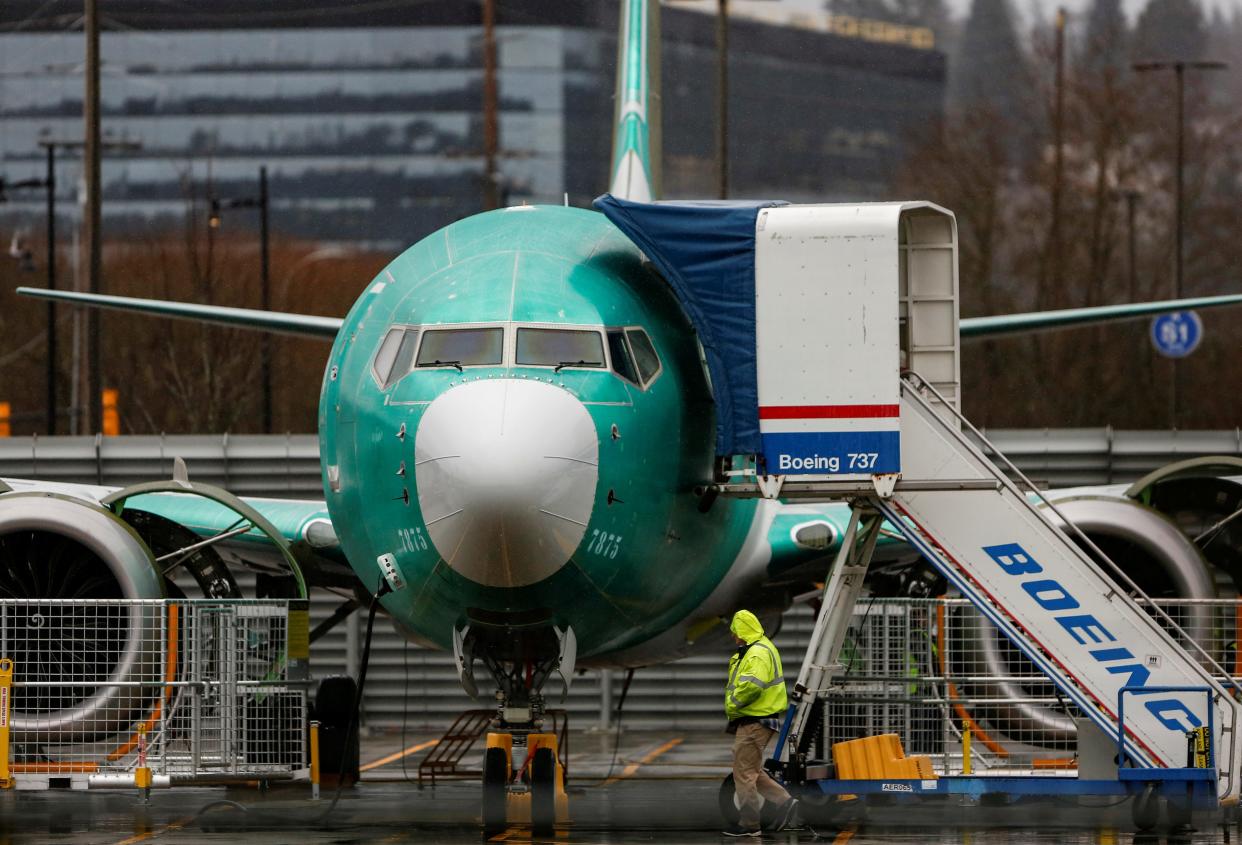737 MAX COMES BACK: What you need to know as the plane flies passengers for the first time after 2 years on the ground

The Boeing 737 Max, the latest generation of the storied plane-maker's 60-year-old workhorse, has been an unmitigated disaster. But after nearly two years on the ground, the 737 Max is back.
On Tuesday, American Airlines will operate the first U.S. commercial flight of the 737 Max, with a 737 Max loaded with passengers leaving Miami International Airport at 10:30 am ET, bound for New York City's LaGuardia Airport.
The global fleet of Max jets was grounded after the second of two fatal crashes, which killed 346 people. Now, as the 737 is cleared to fly again and airlines work to bring their Max jets from storage back into service, questions remain: Can Boeing sell the plane again? Will passengers will be willing to fly on it?
Those answers are for another time. But for now, familiarize yourself with how we got here with the timeline below.
The history of the 737 Max
The 737 Max is the fourth generation of the Boeing 737, and quickly became infamous for its two fatal crashes. Investigators linked them to a faulty system called the Maneuvering Characteristics Augmentation System, or MCAS - designed to compensate for the Max having larger engines than previous 737 generations.
Investigations, hearings, and more problems
Larger engines meant the plane's nose could tip upward, potentially leading to a stall. To neutralize the problem, MCAS could automatically point the nose down.
However, the system could be activated by a faulty reading from a single angle-of-attack sensor, without any redundancies or backups. In both fatal 737 Max crashes, the sensors are thought to have failed, sending erroneous data to the flight computer and, without a redundant check in place, triggering the automated system.
But that was just the beginning.
Struggles for airlines as their planes remain unable to fly
The groundings were initially expected to last for just a few weeks. But Boeing and the FAA found additional, unrelated safety hazards, eventually requiring Boeing to redesign the jet's entire flight computer rather than just the MCAS software.
Airlines around the world have eagerly awaited the jet's return, finding themselves forced to cut capacity and routes as they canceled flights each month the Max remained out of service.
Fallout and the fall of an iconic American corporation
Although the collapse of travel demand due to the coronavirus pandemic has made the airlines' needs a bit less urgent - airlines have grounded additional planes due to the diminished demand - the return of the Max will be a crucial part of how carriers scale back up when the pandemic recedes.
Boeing's hopes are pinned on a successful reintroduction of the Max - and on demand for the plane returning as passengers do. The plane-maker has only booked 42 orders of the plane since the grounding began, and its backlog of 4,102 undelivered orders is quickly dwindling. Since the start of the crisis, Boeing posted its worst loss in decades and lost the title of world's largest plane-maker to arch-rival Airbus.
Boeing said it burned through $4.3 billion in the first quarter and will cut 10% of its workforce
Boeing posted its first full-year loss in more than 20 years, as the 737 Max crisis continues
Boeing had its worst year in 3 decades and lost the title of world's biggest plane-maker
Returning the Max to service
The process of bringing the 737 Max back to the skies has been a long and arduous one, marred by unexpected challenges and delays as intense scrutiny uncovered new issues with the plane.
The FAA could let the Boeing 737 Max resume flying next month - here are all the changes airlines must make before takeoff
Buyouts and layoffs at Boeing and beyond
The implications of the crisis have extended far beyond Boeing. While the plane-maker cut jobs due to the grounding and coronavirus pandemic, additional cuts have rippled through the network of more than 600 manufacturers that supply components for the jet.
Boeing restarted 737 Max production just hours after saying it would lay off thousands of workers
A major Boeing supplier in Kansas is laying off 2,800 workers because of the 737 Max production halt
Read the original article on Business Insider

